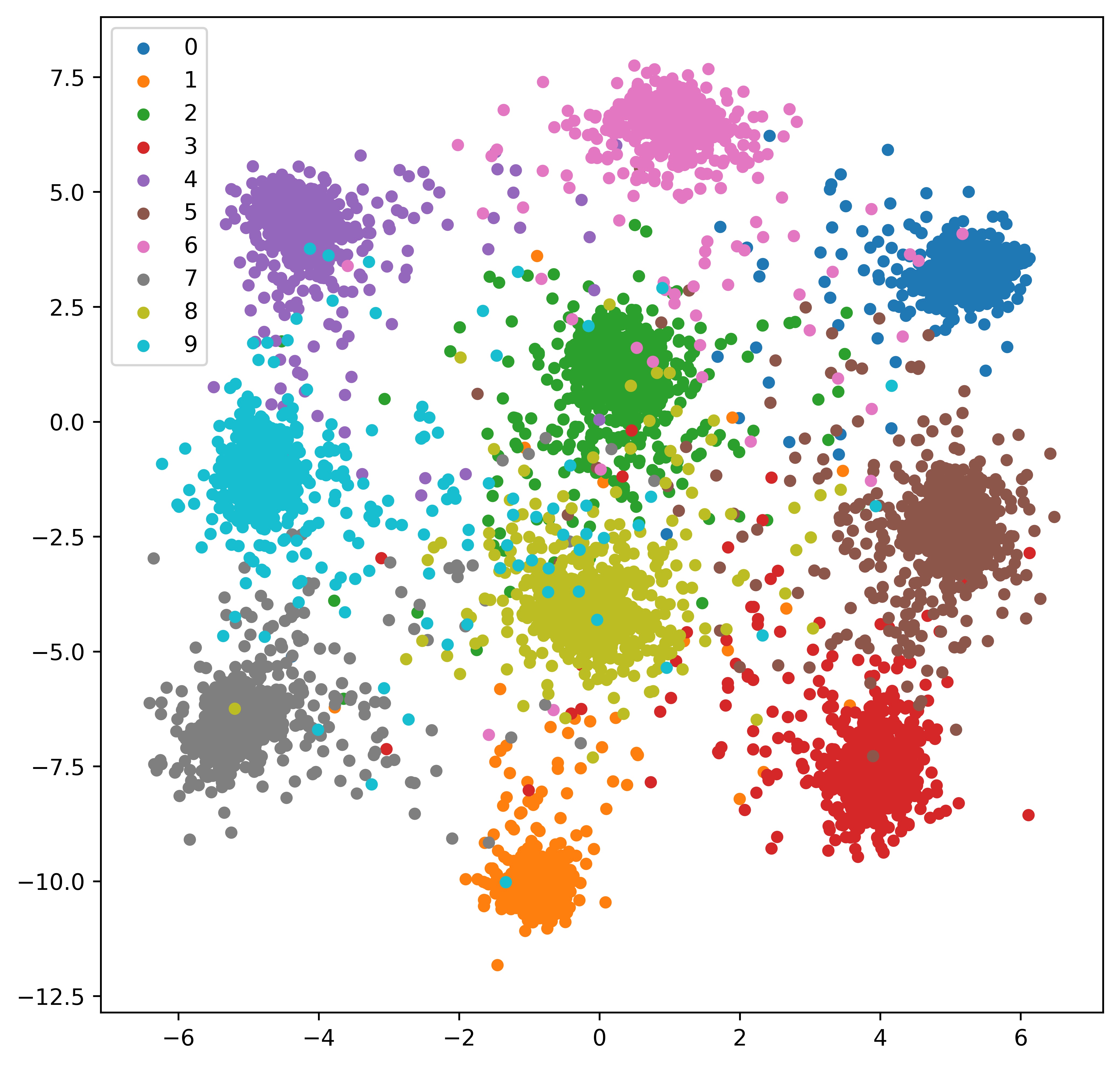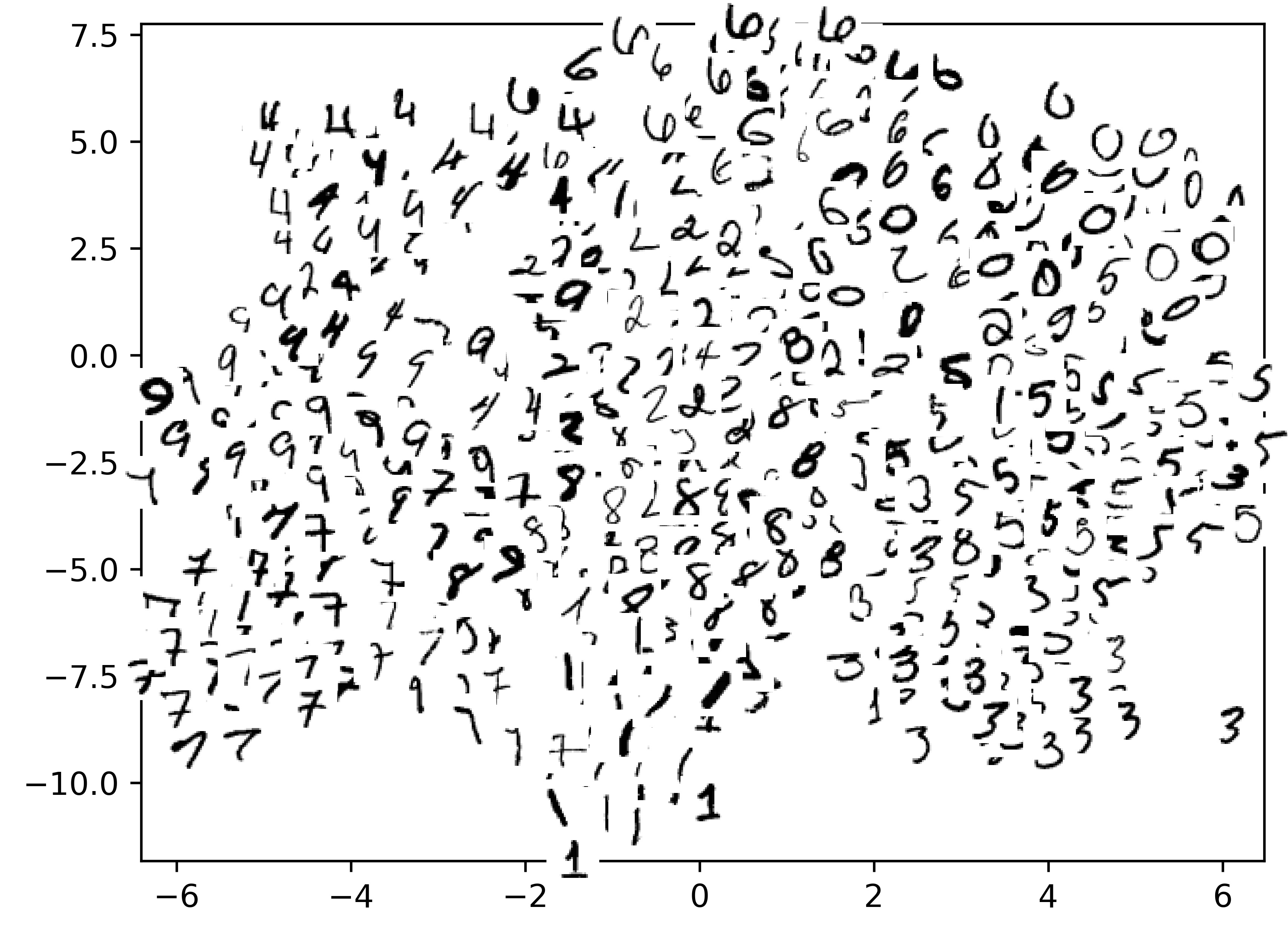Author: Lei Mao
Date: 10/30/2017
This is a practice of Siamese Network implementation on simple MNIST dataset, trying to represent the handwriting digit images using a two dimensional array. The Siamese Network we used in this model is a three-layer fully connected neural network with shared weights.
- Python 3.6
- TensorFlow 1.3
- Matplotlib 2.0
- Numpy 1.13
The TensorFlow package already includes the MNIST dataset. To load the dataset, train the Siamese Network with the MNIST training set, and output the two dimensional embeding features of the MNIST test set to file, simply run:
python siamese_run.pyThe embeding features will be stored in file "embed.txt" and the trained model will be save in "model" directory.
To visualize the two dimensional embeding features of the MNIST test set with its ground truth labels, simply run:
python visualize.pyThe visualization will be saved as "embed.jpeg".
I used different colors to represent the ground truth of different MNIST test data. The coordinates of the test data is the two dimensional embeding features.
If you use Youngwook Paul Kwon's visualization script, you get the following representation of the two dimensional embeding features of the test data, which I personally do not like.
Here we can see the clustering of the data with the same ground truth label, suggesting the model is working extremely well for this dataset.
It should also be noted that, changing model details, such as the optimizer (from GradientDescent Optimzer to Adam Optimzer), may have significant effect on the "clustering" effect of the test data. It might be due to unbalanced sampling if we employ stochastic optimizer, which needs to be further investigated if required.
https://www.tensorflow.org/versions/r0.12/how_tos/variable_scope/
https://github.com/ywpkwon/siamese_tf_mnist/blob/master/inference.py

